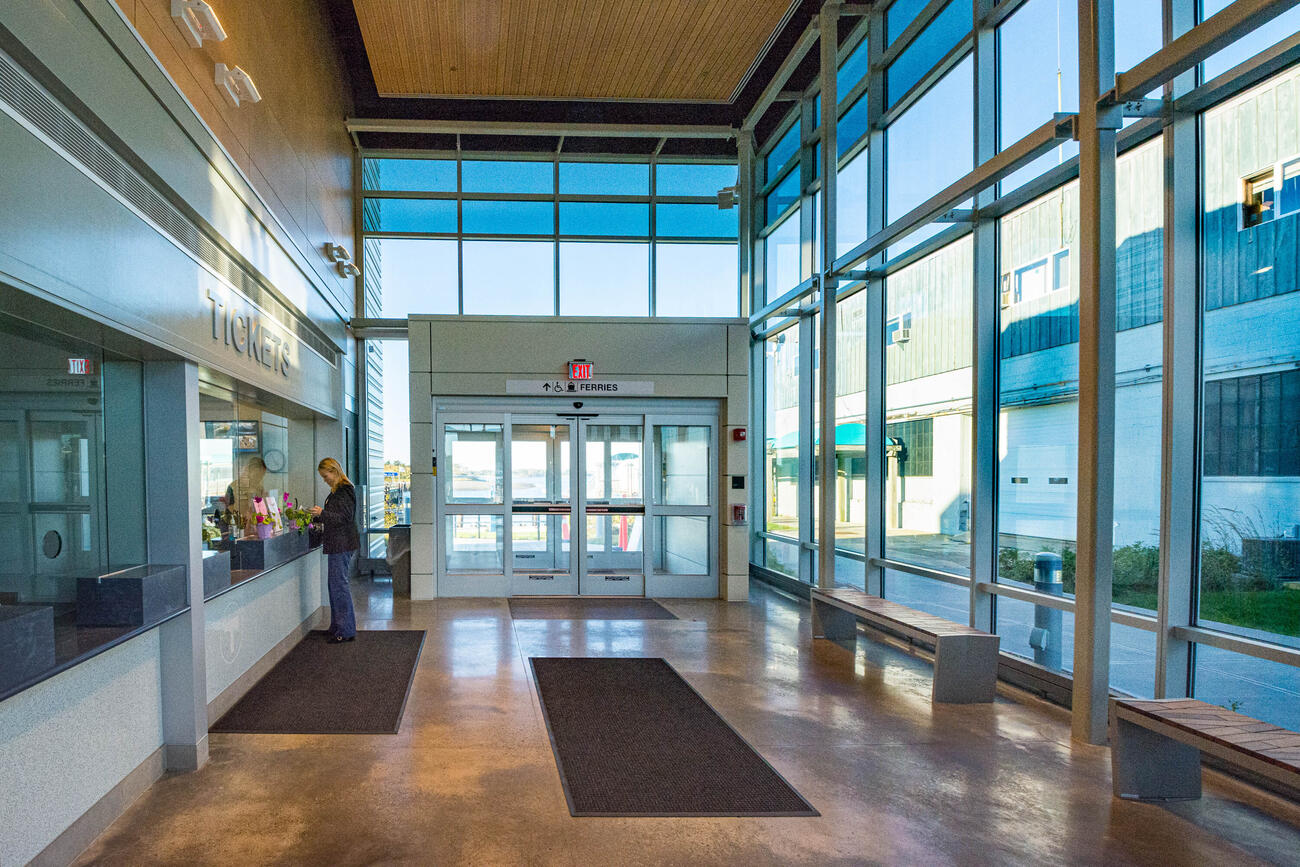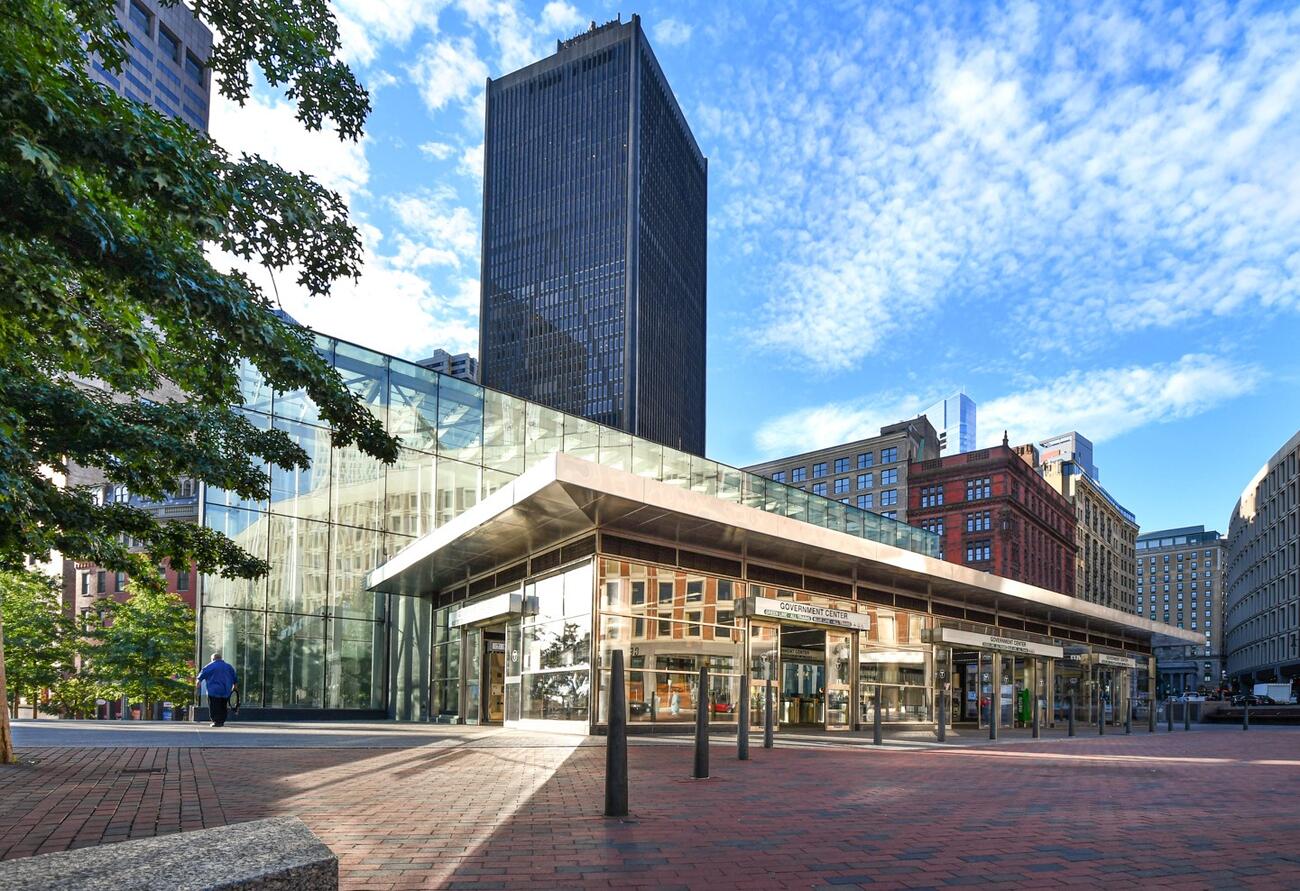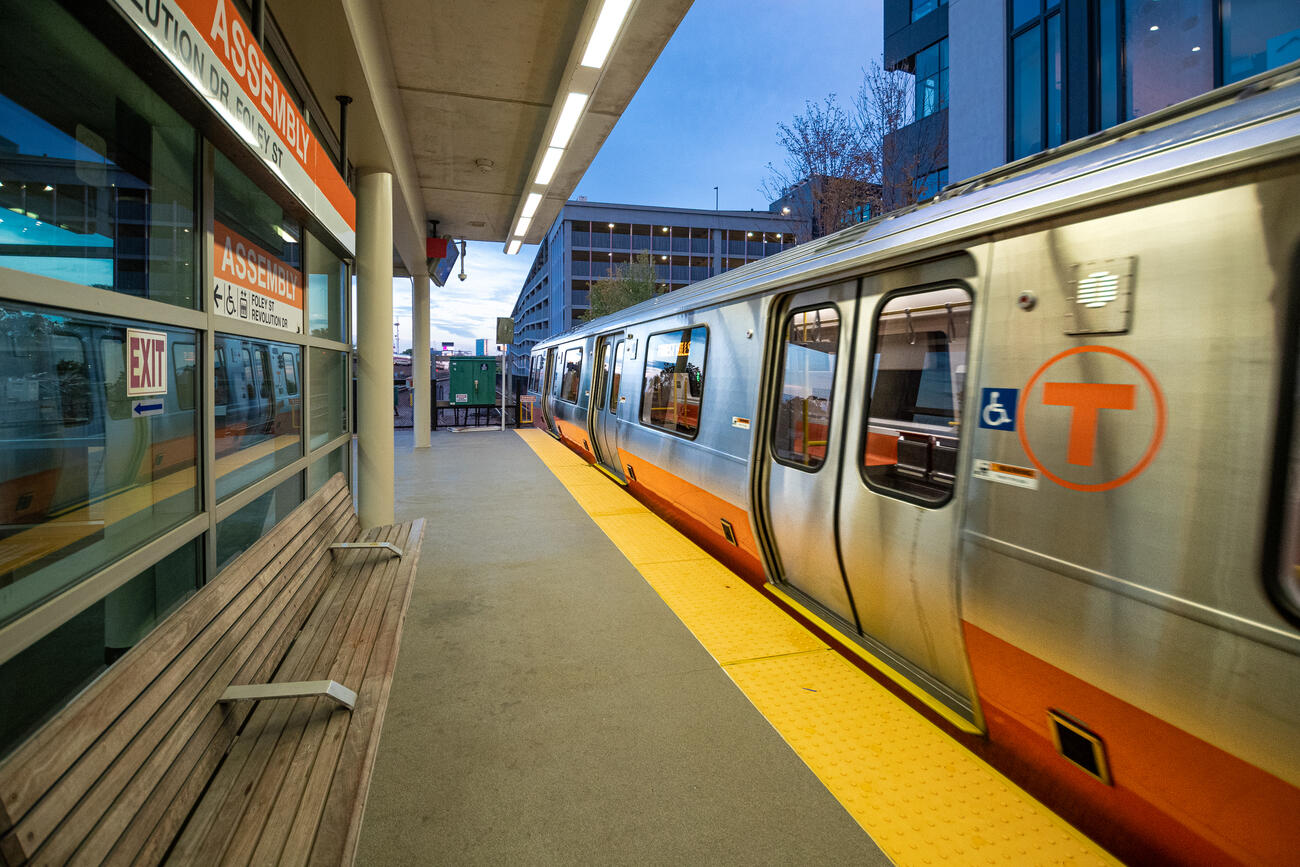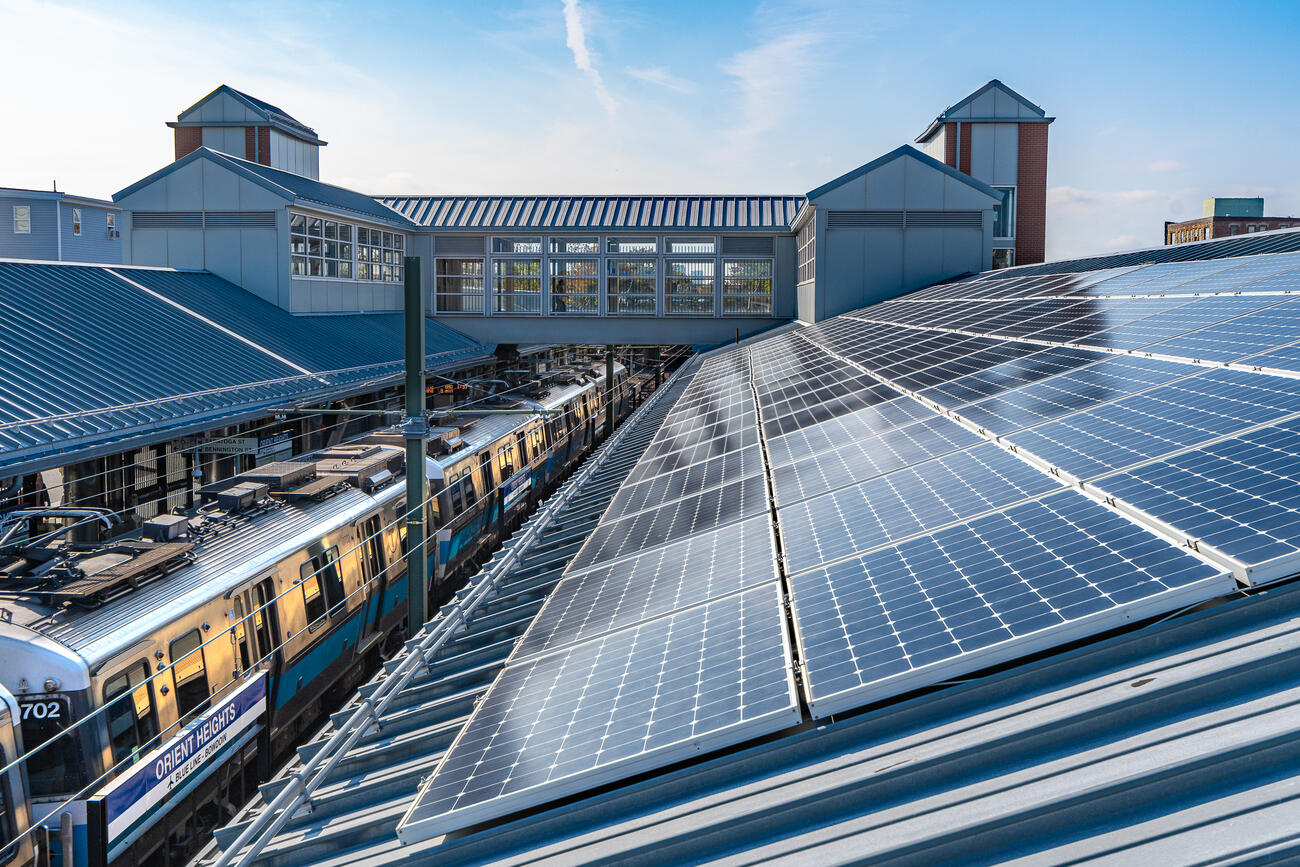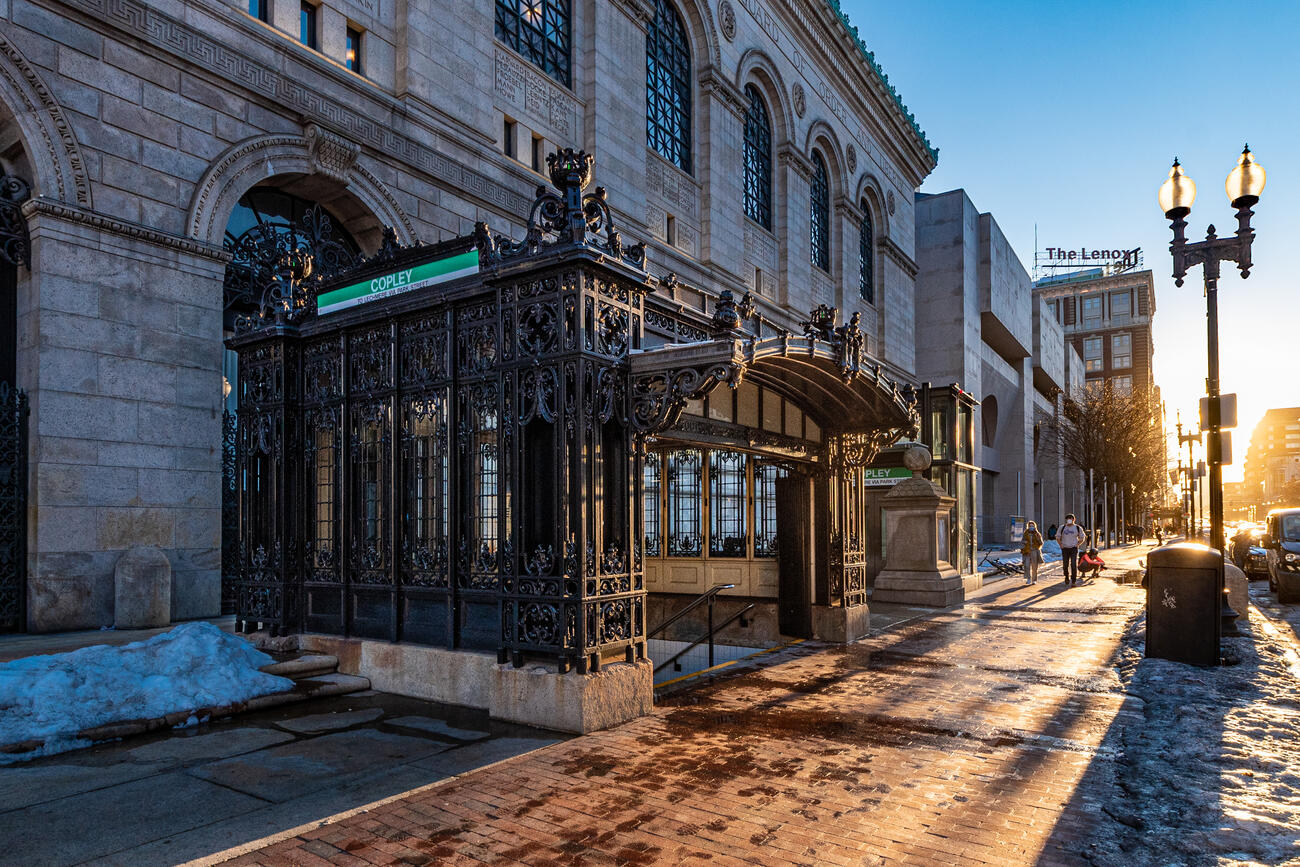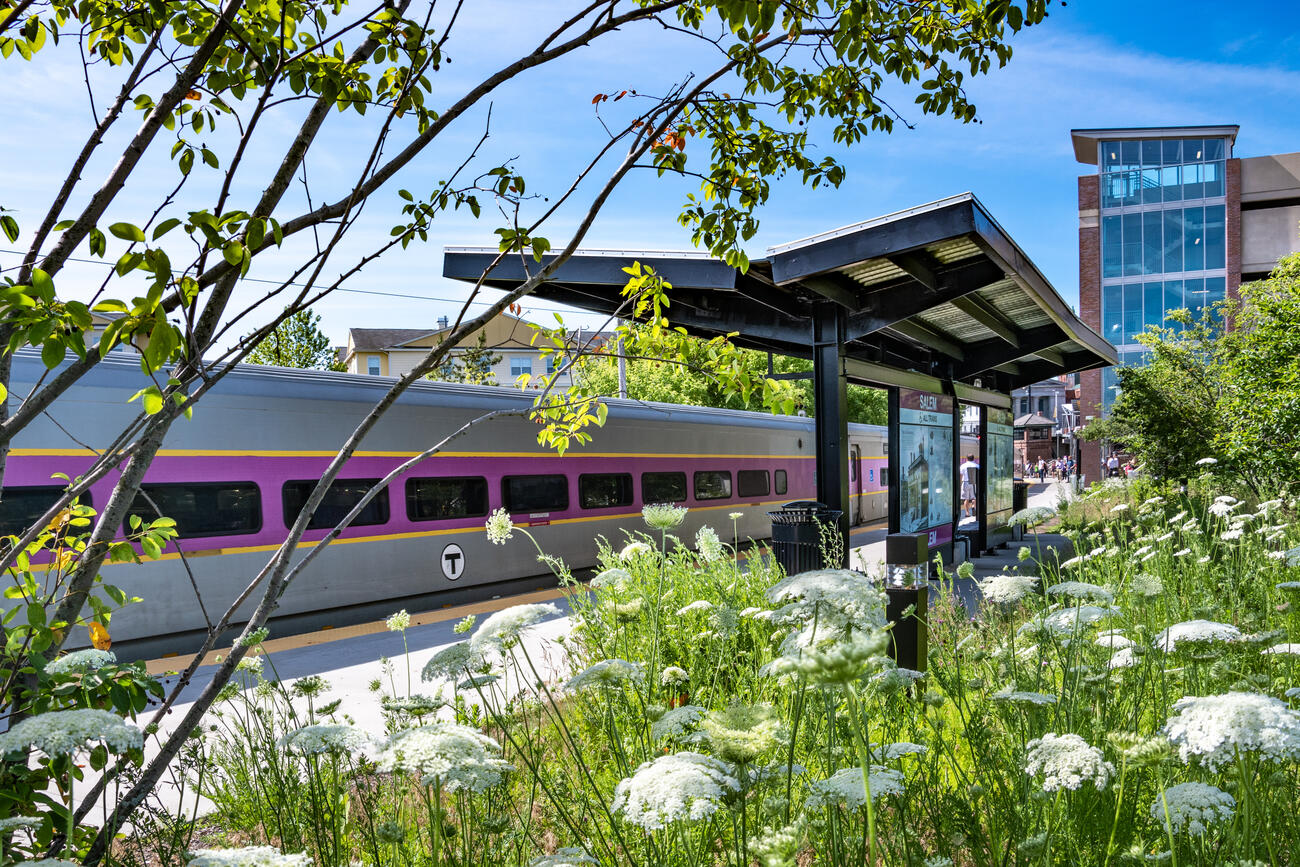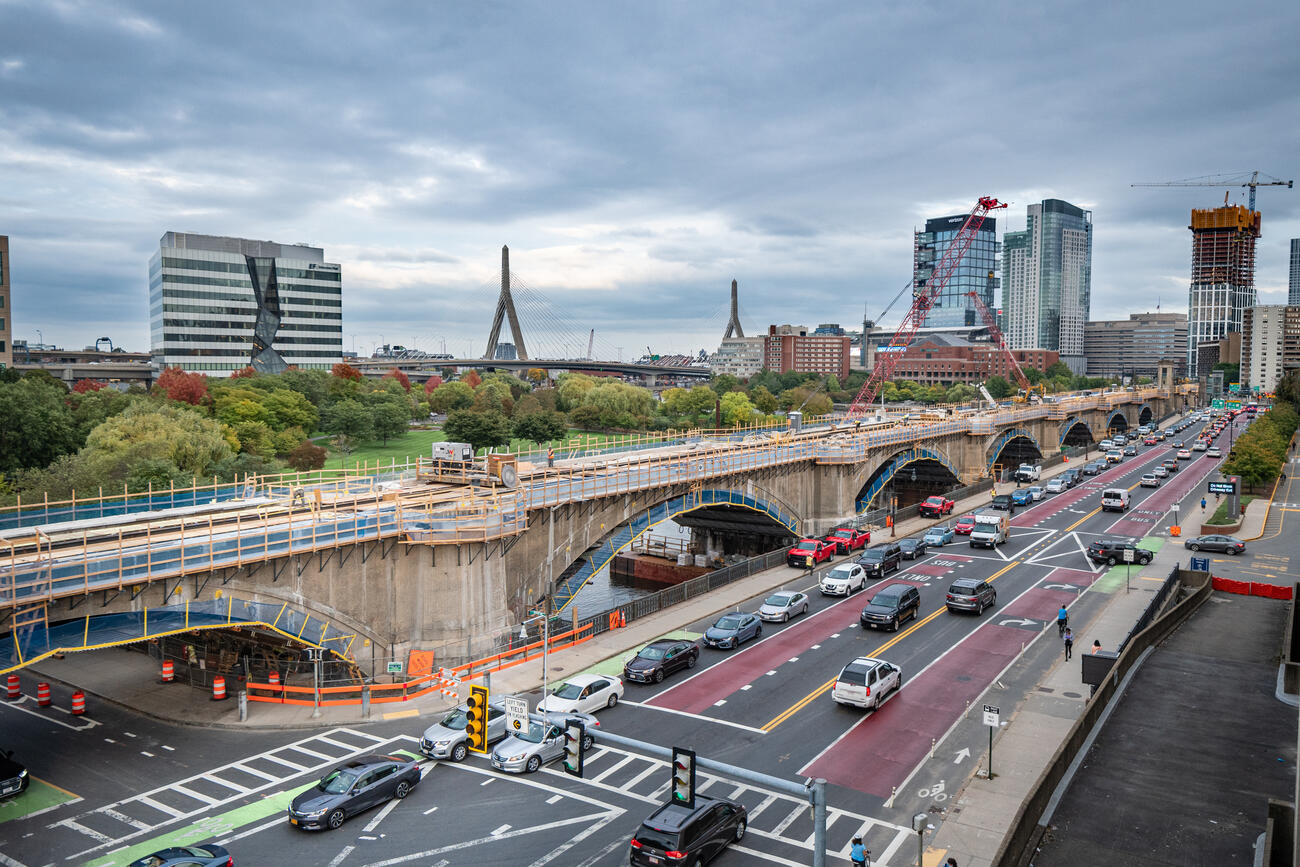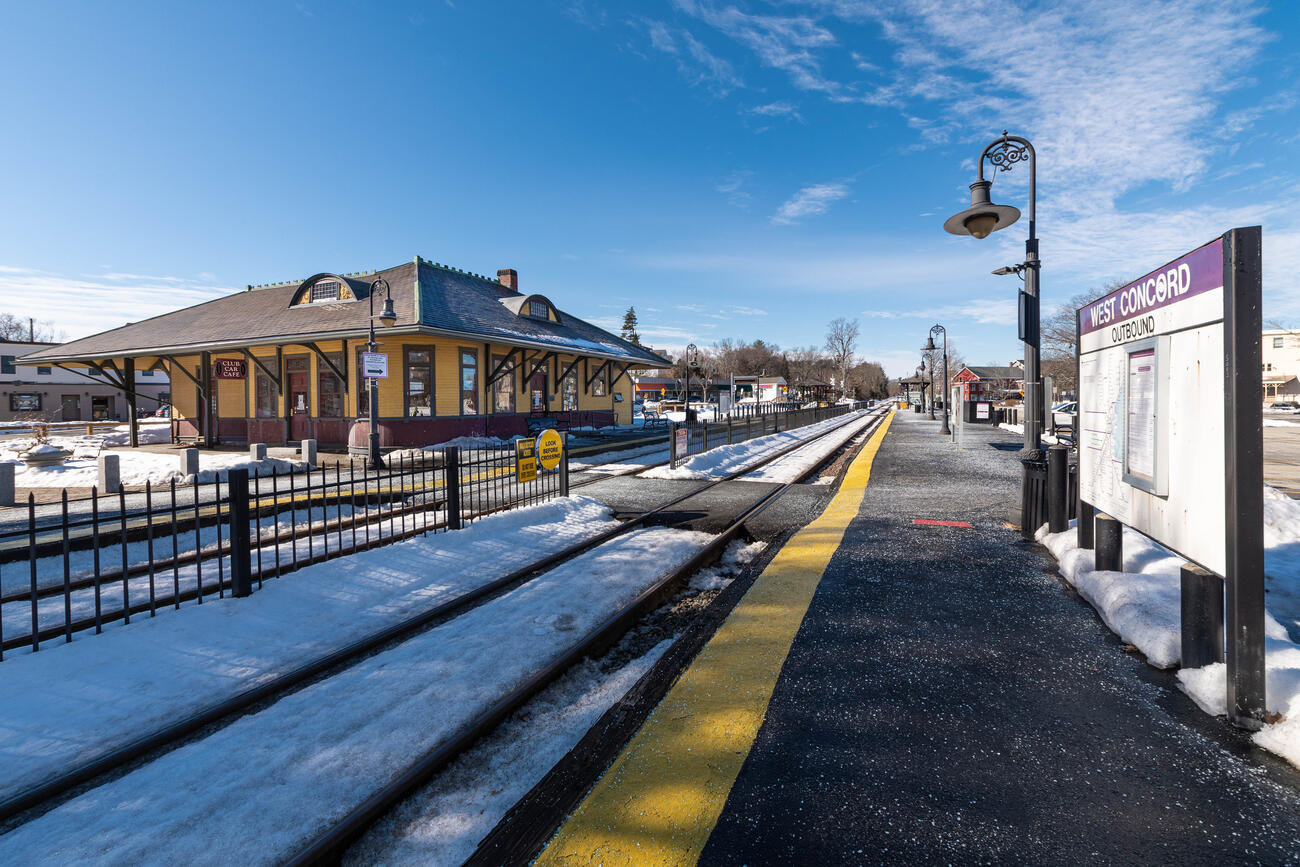Sustainable Design in the MBTA Capital Program
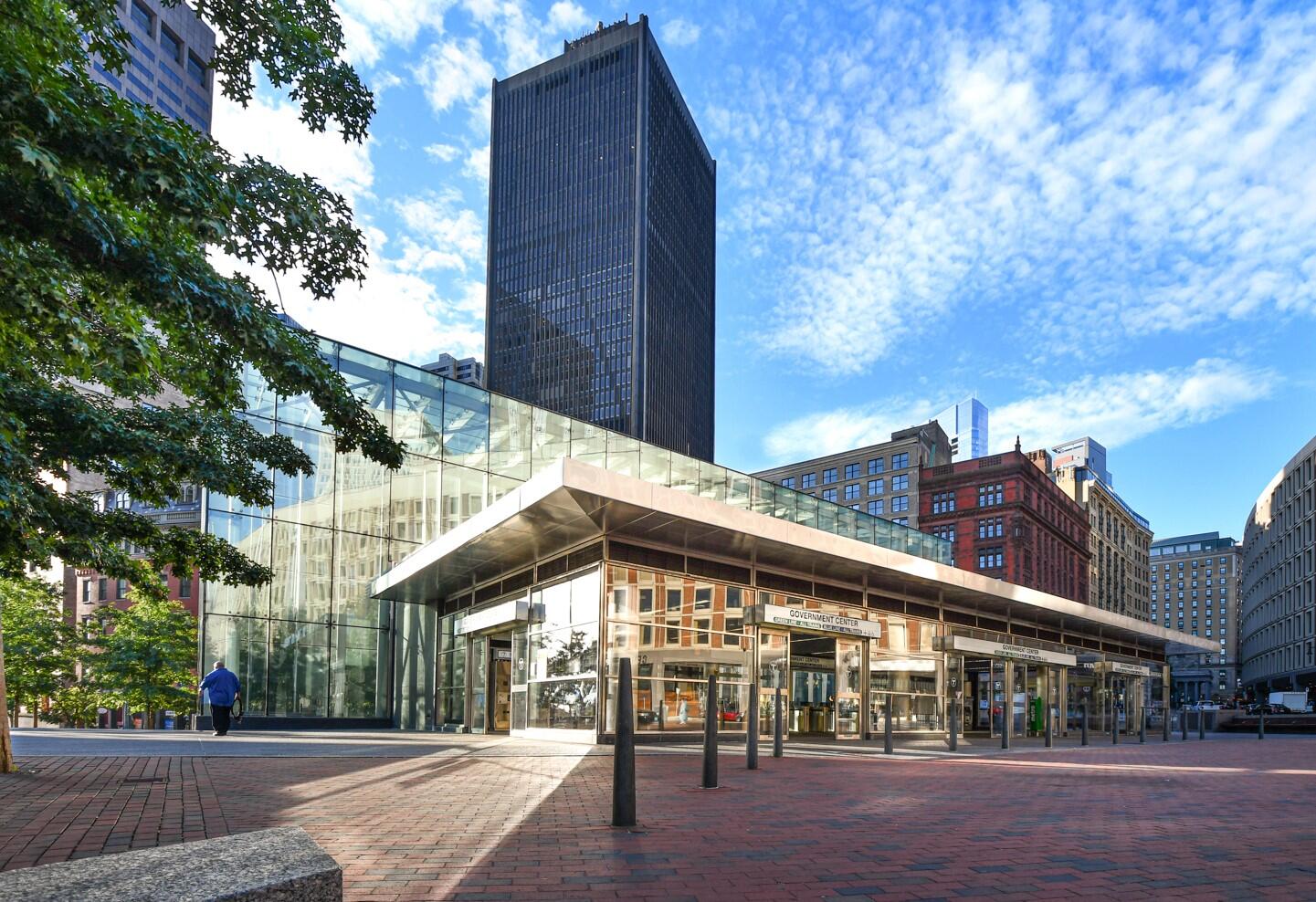
The MBTA ensures that our design and construction projects enhance the environment while minimizing our carbon footprint.
The Envision Certification process guides all projects at the MBTA. It was created by the Institute for Sustainable Infrastructure to build a more sustainable public infrastructure. In addition, the Leadership and Environmental Energy Design (LEED) standards, set by the US Green Building Council, guide building design.
These programs provide a framework to identify sustainable approaches for planning, design, and construction—approaches that will carry on through the operations, maintenance, and end-of-life phases.
Major Projects
The MBTA incorporates energy efficiency, climate resiliency, natural resource protection, and other sustainability elements into each of our projects to ensure they have the smallest environmental impact possible.
Government Center Station is a hub of the MBTA system, where the Green and Blue Lines meet in downtown Boston. This redesign enhances the station and ensures sustainability is an objective.
The completed station features:
- LED lighting in the station and on the plaza
- An on-demand multi-ventilation system that uses 60% less electricity than a traditional system
- Efficient lighting, low-flow water fixtures, non-VOC paint, and locally sourced building materials
- Terrazzo flooring, which is sustainably manufactured with recycled materials
- A rooftop stormwater system that collects rainwater that can be used to maintain landscaping on the plaza
The design and construction of the new Hingham Ferry Terminal, located in the historic Hingham Shipyard, meets LEED Gold standards.
The 8,400-square-foot facility features:
- A green roof to stabilize temperatures and responsibly manage rainwater and snowmelt
- A multi-zone HVAC system to reduce and offset the costs of heating and cooling
- Outdoor landscaping that doesn’t require an irrigation system
- Low-flow water fixtures, and non-VOC paints and sealants
The MBTA’s first new station since 1987, Assembly Station on the Orange Line provides access to the emerging Assembly Square area of Somerville. We carefully chose the site to support one of the largest development projects in the region—one that combines living, shopping, and jobs near a central transit station.
The finished station includes:
- Window and ventilation design that uses sunlight to warm the station in cold weather and shade to keep it cool in the summer
- A specifically designed roof that stabilizes the station temperature, reduces the heat island effect, and filters and drains rain and snowmelt
- Electric traction elevators that do not require machine rooms
- Efficient lighting, low-flow water fixtures, non-VOC paint, and locally sourced building material
Originally opened in the 1950’s, Orient Heights Station on the Blue Line was recently updated to be more modern, efficient, and fully accessible.
Station upgrades include:
- A new heating system and energy-efficient windows
- Efficient lighting and water fixtures
- Electric traction elevators that don’t require a machine room
- Responsibly sourced sustainable hardwoods, non-VOC paint, and LEED-certified benches
- A light-colored green roof for temperature control and stormwater drainage/management
- Solar panels that provide 20% of the station’s energy
Historic Preservation
Many of the MBTA’s stations, bridges, and facilities are listed on the National Register of Historic Places. The MBTA is committed to preserving that history as we modernize our transit system and meet the functional and architectural goals of each project.
Copley Station neighbors some of Boston’s most historic locations: the Boston Public Library, Old South Church, Trinity Church, and Copley Square.
When we made accessibility upgrades recently, we preserved historic elements of the original station.
The 1914 Beaux Arts Headhouse was dismantled into 1,000 pieces, catalogued, and repaired using traditional blacksmithing techniques from the early 20th century. More than 90% of the original structure was put back in place when work was completed.
The updated parking garage and busway at Salem Station sits on a 19th-century railroad turntable and roundhouse.
When the site was discovered, Public Archeological Laboratories, Inc. (PAL) conducted a full excavation. The archeologists catalogued and photographed all archeological resources found on site, and submitted a report to the Massachusetts Historical Commission (MHC) and Salem Historical Commission (SHC).
The MBTA used granite from the site in the North River viewing area at Salem Station and the remains of the roundhouse and turntable are still visible.
Streetcars first crossed the Lechmere Viaduct in June 1912. Today, the bridge carries Green Line trains from Lechmere Station across the Charles River into downtown Boston. The Viaduct is listed on the National Register of Historic Places and is part of the Charles River Historic Basin.
In May 2020, the MBTA closed the 110-year-old viaduct in conjunction with Green Line Extension (GLX) work to rehabilitate and replace track on the historic structure. These upgrades:
- Allow more trains to pass over the bridge
- Serve the new stations from Green Line Extension project
- Reconstruct track, signals, and traction power
- Strengthen the arched concrete structure to handle heavier loads and increased train frequency
- Preserve the historic facade
During the reconstruction, the MBTA employed historic preservation professionals to ensure construction was consistent with the Secretary of the Interior’s Standards for Rehabilitation and Illustrated Guidelines for Rehabilitating Historic Buildings.
The MBTA and its contractors properly wrapped and protected the underpinnings of the Viaduct, and ensured that the materials used were consistent with the original design of the Viaduct.
Throughout the project timeframe, the Massachusetts Historic Commission, Cambridge Historic Commission, and the Boston Landmarks Commission consulted with the MBTA and provided expert oversight.
The rehabilitation of the historic viaduct was completed in March 2022.
Learn more about the Lechmere Viaduct Rehabilitation project
The original West Concord Station was built in 1894 at the junction of three major railroads. The building fell into disrepair, which impacted its value on the National Register.
Partnering with the Town of Concord and Friends of the West Concord Depot, the MBTA supported renovations that upheld the station’s original design elements. The renovated station includes the Club Car Cafe, a popular restaurant, and an updated waiting area for MBTA customers.
The town of Concord and the MBTA received the Massachusetts Historical Commission Preservation Award for this work.
Historic Resource Documentation
The MBTA often does a full photo-documentation of historical structures before alterations or demolition begins. This provides a record of historical elements—materials, craftsmanship, architectural elements, setting, and context—before we make any changes to any buildings.
The MBTA has photo documentation of many historic properties:
- Orient Heights Station in East Boston, MA
- Merrimack River Bridge in Haverhill, MA
- Shoreline Bridge in Readville, MA
- Gloucester Drawbridge in Gloucester MA
Photo-documentation is often required by Section 106 of the National Historic Preservation Act, as well as the Memorandum of Agreement between the MBTA, the Federal Transit Administration, the Massachusetts Historic Commission, and the local historic commission.
Building a Better T
As part of our $9.6 billion, 5-year capital investment plan, we're renovating stations, modernizing fare collection systems, upgrading services for our buses, subways, and ferries, and improving the accessibility of the entire system.
Building a Better T
As part of our $9.6 billion, 5-year capital investment plan, we're renovating stations, modernizing fare collection systems, upgrading services for our buses, subways, and ferries, and improving the accessibility of the entire system.
